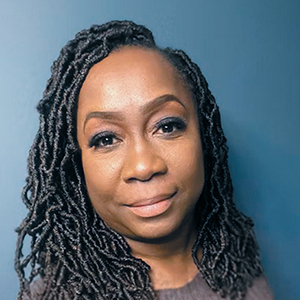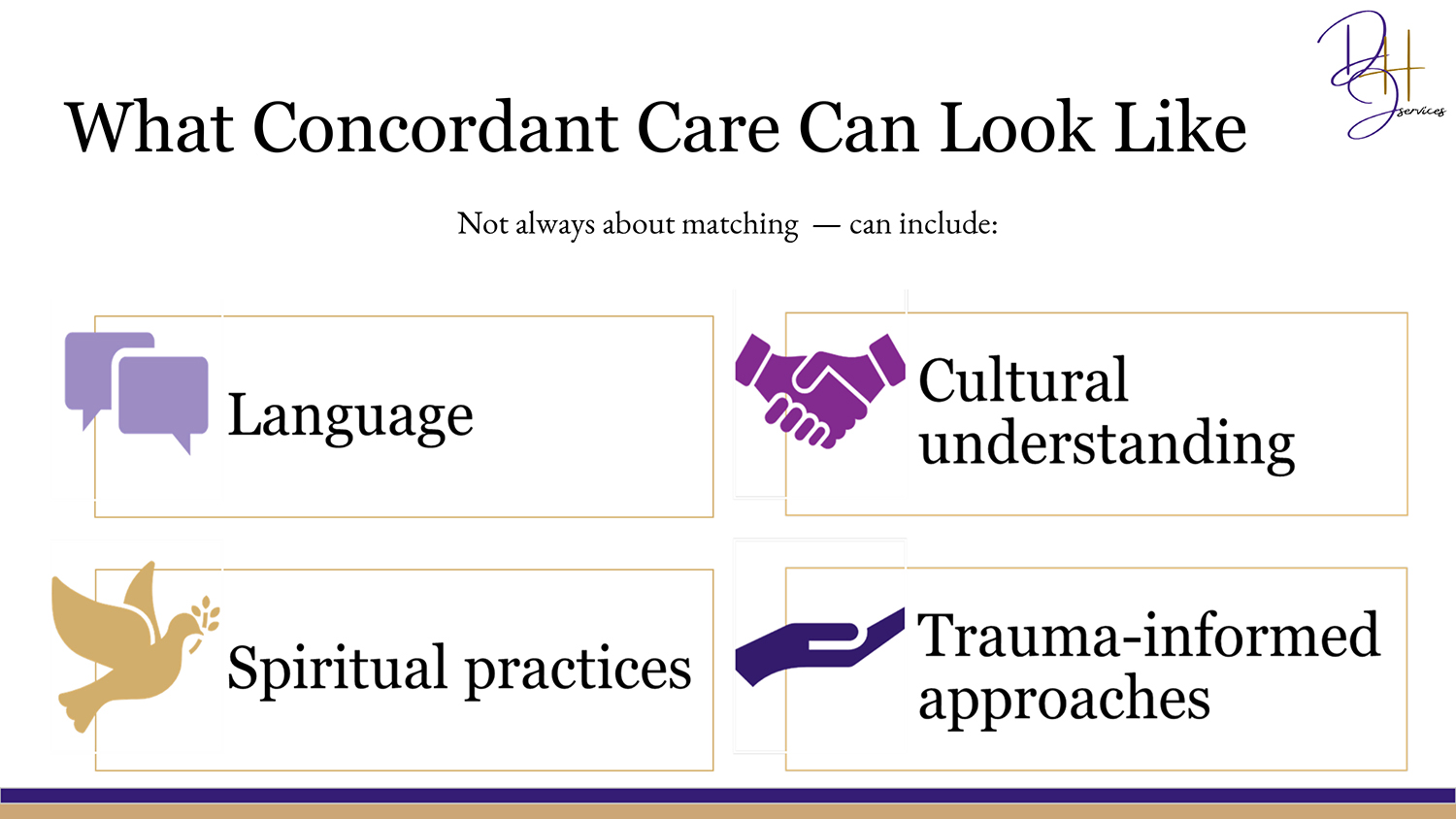Ministry eldercare facilities have a mission — and requirement — to provide their residents with person-centered care that honors their dignity and meets their needs.
These facilities also have a moral and legal obligation to respect the dignity of their staff members.
What happens when these two callings come into apparent conflict? What are these facilities to do when a resident requests that a staff member be reassigned because of that staff member's immutable characteristics, such as race or sexual orientation?

During a CHA webinar, consultant Dawn Hawkins Johnson explained how ministry facilities can respond to such conflicts in a way that honors the dignity of both the resident and the targeted staff member. She said that compassion, empathy, dignity and communication can go a long way toward a good outcome.
"We need to ask, 'Did we lead with compassion with staff and residents in this situation?'" said Johnson, who is president and CEO of the DHJ Services consultancy. The firm describes its mission as "to ensure that health policy and health care delivery are centered in equity that leads to improved health, quality and care."
Johnson noted that it is important to recognize that both staff and residents will be asking themselves, "Did you see me? Did you hear me? And do you want the best for me?"
The webinar, "Building a Culture of Belonging in Long-Term Care," on June 16 was part of the CHA series called Ethical Issues in Long-Term Care.
Patient and staff suffering
CHA offered this webinar in response to concerns expressed by members. The members said they wanted ideas on how to handle ethical issues that arise when there are differences between residents and staff.
Complicating the response is that there are moral and legal obligations to meet the needs of both residents and staff, and sometimes those obligations are misaligned.
Near the outset of the webinar, Johnson polled attendees and found that most have encountered residents making staffing requests based on team members' gender, religion, sexual orientation, race or ethnicity. And most poll respondents felt ill-prepared to handle such requests.
"These are real situations," Johnson said. "And people feel they don't have the right tools to manage them."
To illustrate, Johnson laid out a case study of a retired man living in a long-term care facility who requests that none of the staff caring for him be "gay, LGBTQ+ or foreign." Johnson explained that sometimes in these situations, managers will quietly reassign staff so that the resident will only be cared for by heterosexual, white caregivers.
She explained how honoring such requests can lead to bad outcomes. More residents may hear of the request and make their own requests, causing staffing nightmares. Staff members — and not just those reassigned — may be hurt by the reassignments. Morale likely will suffer. Staff may avoid interacting with residents making the requests, potentially leading to lower-quality care. Patient harm and staff suffering can be the result.
It is not uncommon, Johnson said, that, based on discriminatory reasons, residents' family members disrespect staff and residents become more combative with the staff.
In all such situations, she said, "We need to ensure that the delivery of quality care is supported for residents and staff. We need to build teams and systems where both residents and staff are respected."
Concordant care
Having the right infrastructure in place at long-term care sites can potentially head off such concerns, Johnson said. This includes policies, procedures and a culture that focus on quality of life and person-centered care for residents and comprehensive training and a safe and supportive environment for staff.
Johnson recommended prioritizing the 4Ms as promulgated through the Age-Friendly Health Systems movement: assessing what matters to a resident, what the person's medication and mobility needs are and what their mentation is. Understanding a resident's 4Ms at the outset and throughout their stay in a facility, can help guide care plans and decisions. Attention to the 4Ms also can help identify and head off potential or actual conflicts between residents and staff arising from differences in their backgrounds.

The 4Ms can help inform a care plan for residents. Staff should document residents' preferences and needs and communicate openly about any attitudes that may conflict with the facility's mission, including its respectful treatment of staff. Failure to do so could result in rising tensions and undermine resident and staff well-being.
Documentation and communication are essential throughout this process, as is collaboration among a multidisciplinary team, said Johnson. That team can include clinical, leadership and spiritual care staff, for instance, who can work together to understand the root of the concerns and potential solutions.
Johnson said it is also important for staff to be well trained in working with a variety of residents and on how to interact with residents who may have a different background, language, cultural understanding and spiritual tradition than them. Staff also should be trained in trauma-informed approaches. Johnson called this comprehensive approach concordant care.
Cultural humility
Johnson said that it is important for facilities to build an environment with cultural humility. Cultural humility is the practice of self-reflection and learning from others to honor their beliefs, customs and values. Johnson said facilities also should strive to have diverse, multilingual teams with staff who reflect the makeup of the resident population. The facilities also need a structured process for documenting the 4Ms and for handling all resident preferences, including those that may pose challenges that need to be addressed.
She noted that leadership must encourage collaboration and partnership among all staff and residents. "We need to build bridges," she said, "and not put up walls."
Johnson added that there are some promising practical solutions to these types of challenges in long-term care. Some of these include finding respectful ways to introduce residents and staff to one another and set a proper tone for the relationship, involving chaplains and other liaisons in facilitating relationships, and involving interpreters and bilingual staff in relationship-building.
She noted that it is important to help residents and staff to better understand one another's perspectives. Each may have experienced inequities in their lives, such as inequities related to race, gender, age, sex, religion, or lack of access to necessities such as education or health care. Understanding possible commonalities despite these differences could help them better relate to one another. She said sometimes biases result from traumas people have experienced, and getting to the bottom of that can help advance understanding.
At the close of the webinar, CHA's Dennis Gonzales, senior director of mission innovation and integration, shared an example of how this type of approach can succeed. When he worked at a Catholic health system, a patient in the intensive care unit didn't want a particular female chaplain — a Catholic sister — to visit him, because of a bias he held against religion. That chaplain learned that the man loved country music. She bought a CD player and some country music CDs and went into the patient's room to play them for him. The patient found that he enjoyed her visits and loved to talk with her about his favorite singers and songs. Over time, the two bonded, and the patient then welcomed the chaplain and benefited from her presence.
Johnson said, "Through conversation, we can understand what matters to people and how to respond. Can you identify people on your team who can connect with residents? Maybe staff can discuss with them what their past experiences are and who each resident is. There are many ways to connect, and it takes time to get to know people."
Johnson can be contacted for more information at info@dhjservices.com.
The webinars in the Ethical Issues in Long-Term Care series are available in the CHA online store. They are free to CHA members and for purchase by nonmembers. This webinar featuring Johnson is available here.
